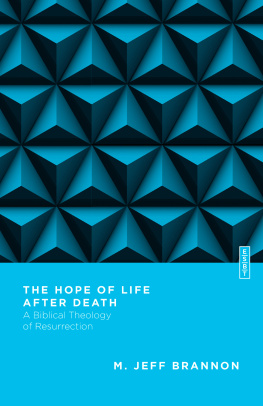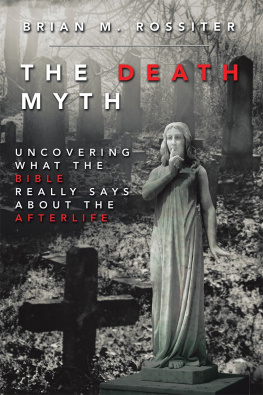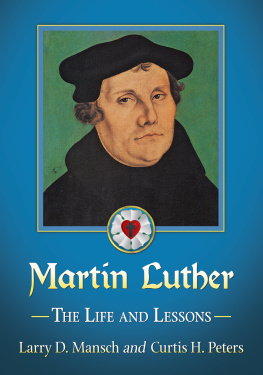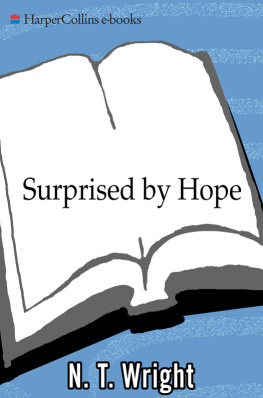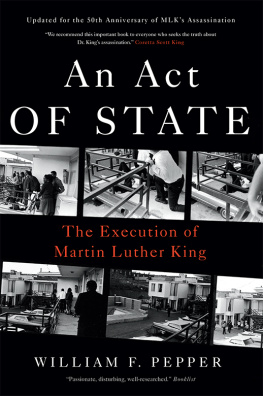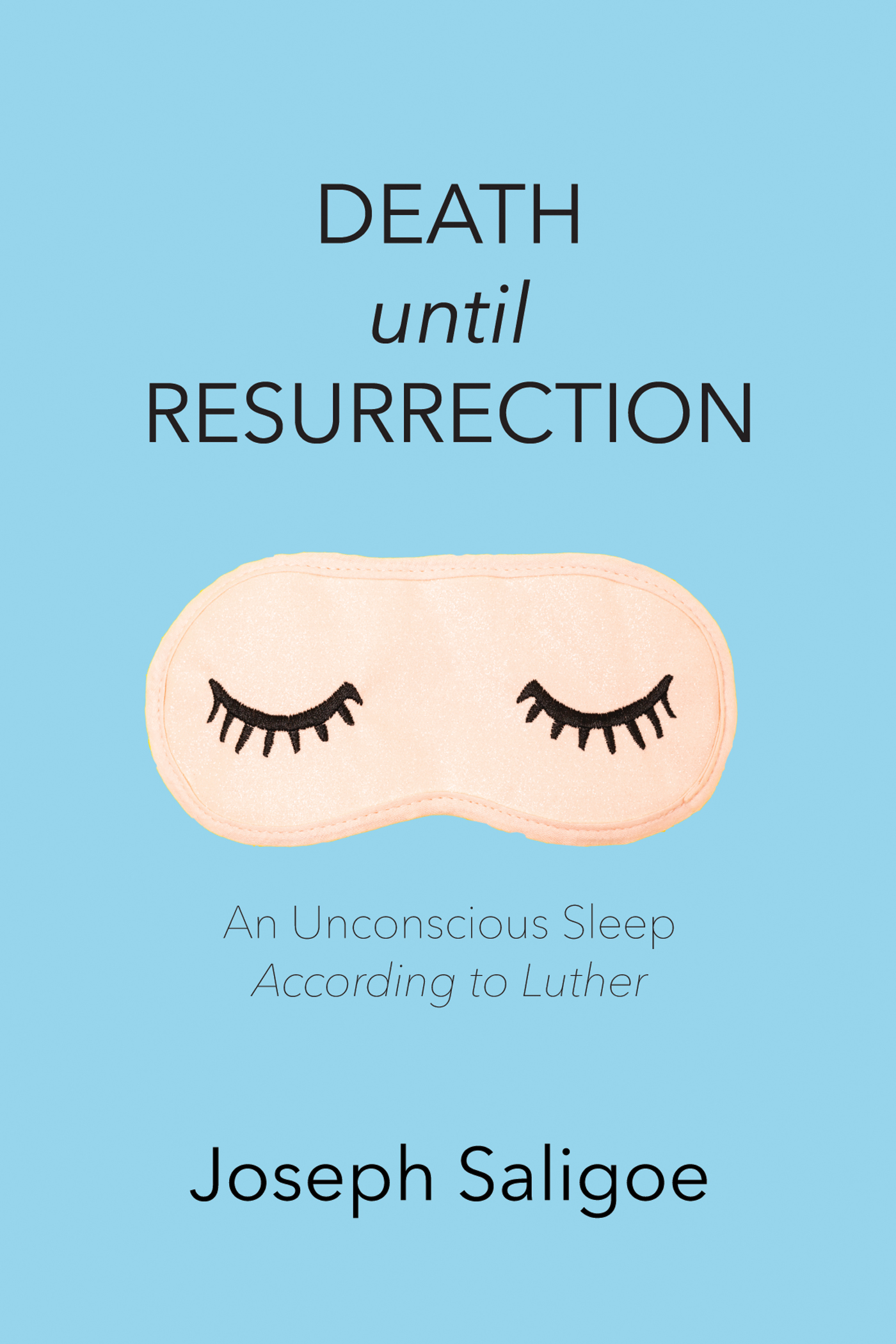Death until Resurrection
An Unconscious Sleep According to Luther
Joseph Saligoe
Death until Resurrection
An Unconscious Sleep According to Luther
Copyright 2020 Joseph Saligoe. All rights reserved. Except for brief quotations in critical publications or reviews, no part of this book may be reproduced in any manner without prior written permission from the publisher. Write: Permissions, Wipf and Stock Publishers, W. th Ave., Suite , Eugene, OR 97401 .
Wipf & Stock
An Imprint of Wipf and Stock Publishers
W. th Ave., Suite
Eugene, OR 97401
www.wipfandstock.com
paperback isbn: 978-1-7252-5339-1
hardcover isbn: 978-1-7252-5340-7
ebook isbn: 978-1-7252-5341-4
Manufactured in the U.S.A. 03/02/20
This book is dedicated to my mother, Wanda,
and to my father, Joe (d. 1986 ).
Wont somebody tell me... what is the soul of a man?...
As far as I can understand, a man is more than his mind.
Steven Stern and George Krikes, Soul of a Man, in Son of God, Original Motion Picture Soundtrack ( 2014 )
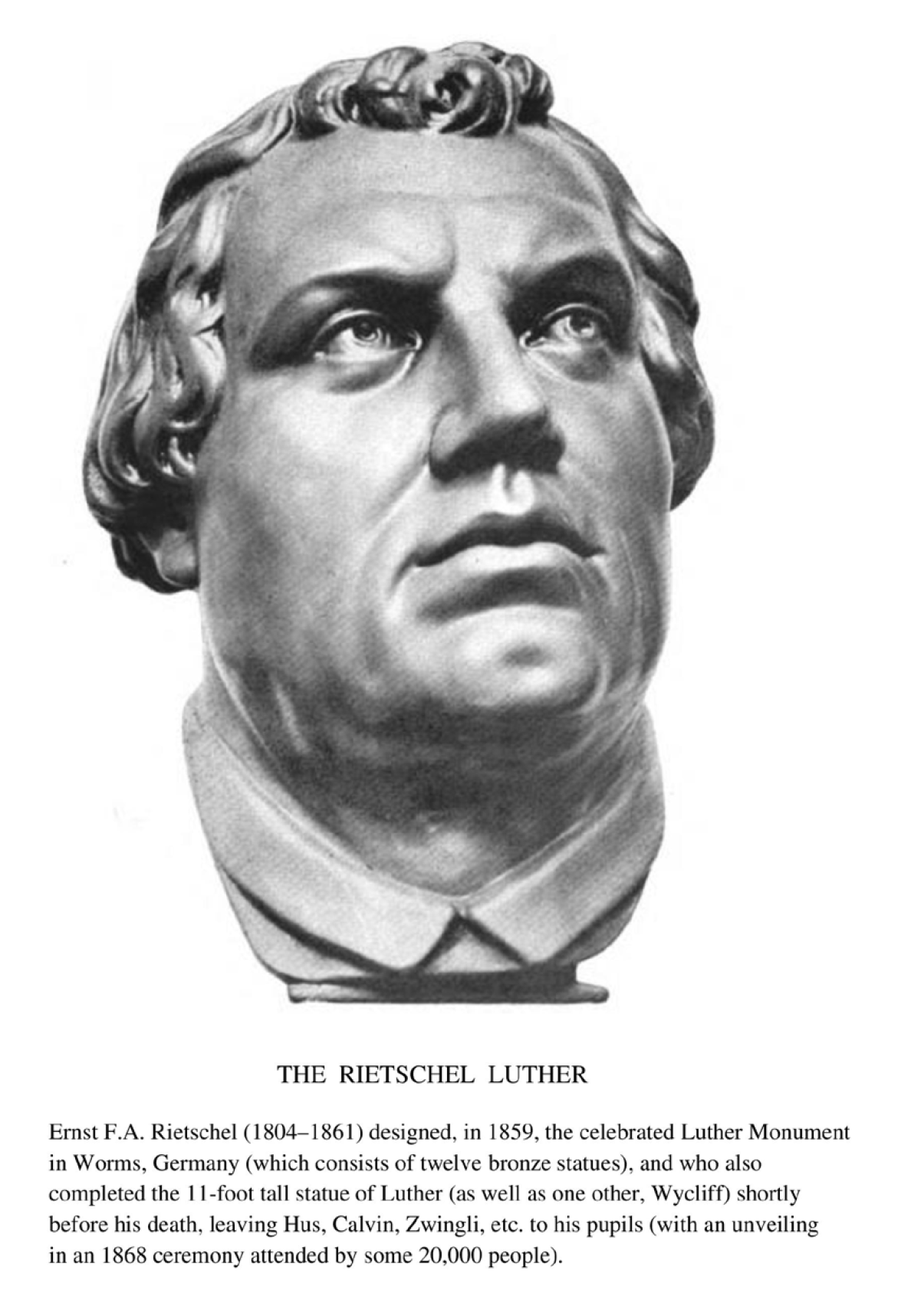
Tables and Outlines
Tables: Each of the following tables was created from the authors original research and forms part of the basis of the books conclusion.
Table . Comparison of periods that Luther discussed death as unconsciousness
Table . Relevant works by type and number of distinct daily events (producing days)
Table . Genesis chapters with the most instances in the Genesis lecture series
Table . Most instances ranked by type of work
Table . Sermons and lectures on books of the Bible with death as unconsciousness
Table . Years ranked by highest incidence of death as unconscious sleep mentions
Table . Measuring Luthers emphasis in his works containing death as sleep ( instances)
Outlines: The following three outlines concisely summarize Luthers discussions of death during three stages of his life where the first two outlines are preliminary and thus are excluded from the count of instances using strict criteria where he had mentioned literal death being like natural sleep over the last twenty-four years of his life (excluding his quotes of Scripture and of its commentators).
Outline . The very first mention of death as sleep during a university lecture on Romans in the winter of 1516 .
Outline . Further ambiguous mentions of the subject are seen in five writings from 1517 to 1521 .
Outline . The count begins in January 1522 with a personal letter from Luther responding to a friends question and contains several unambiguous mentions of literal death as being unconscious sleep, and this outline presents an annualized summary from 1522 to 1546 , the year of Luthers death, and it includes several quotes in and in 1545 from his translated writings.
Acknowledgments
I want to thank the following individuals for reading and commenting on the draft chapters of the manuscript: Dr. Scott Seay (history professor, etc. at Christian Theological Seminary) who has particular expertise in Luther studies and who has continued to be helpful to me; Dr. James Lewis (former dean of the seminary at Anderson University) who has continued to provide great encouragement to me ever since the beginning of this long project and after his own retirement from teaching there; and Dr. Gregory Robertson (theology professor at AU). I also want to thank the present dean of the AU seminary, Dr. MaryAnn Hawkins. If it wasnt for her input one day, this book may not have been written. Additionally, I want to thank the following people: Jonathan Stemerick for providing extensive comments on the draft chapters of the manuscript (who also recently obtained an MTS degree from AU); Dr. Janet Brewer (library director at AU); and Nicholas Stanton-Roark (library archivist at AU) who also provided invaluable assistance as a most knowledgeable writing tutor.
I appreciate the support and academic instruction from them in improving my writing and research techniques, and in maximizing my potential as a student of Scripture. I would like to express special gratitude to Caleb Shupe, copy editor at Wipf and Stock Publishers, for providing many helpful suggestions and corrections to the manuscript. For the final product, however, I take full responsibility. Sincere appreciation goes to the editorial, copyediting, and production team. I also want to especially thank my wife, Novalea Saligoe, for her patience and abiding care throughout these last eight years of near full-time study and writing (Master of Theological Studies, and presently, Im working on a PhD in Theology). This preparation has culminated in this book (my first of hopefully several books on the biblical topics of rethinking the nature of the soul, the nature of death and of resurrection, and as a consequence of this, the rethinking of the nature and duration of hell).
Abbreviations
E: The Erlangen edition of the works of Luther (in their original language); contains over volumes; published in 1857 plus later revisions; and is also referred to as Luthers Samtliche Werke, Erlangener Ausgabe, or EA.
LW: Luthers Works is an English translation; first published in 1955 with about volumes so far (a few more are expected); and is also referred to as the American Edition. There were at least two other series consisting of an English translation that preceded LW (in the nineteenth and twentieth centuries).
StL: The Saint Louis edition of the works of Luther (in Luthers original language, either German or Latin) was revised in 1885 1910 ; first published in 1740 ; contains volumes; and is also referred to as the Walch Edition, St. Louis-Walch, or the Halle Edition.
WA: The Weimar edition is the most complete set of Luthers works (in their original language); published in 1883 2009 ; contains volumes; and is also referred to as Martin Luthers Werke or Weimarer Ausgabe.
chapter 1
What Happens When People Die?
Resolving the confusion on what Luther thought
W hat happens to the soul when people die? What really happens to the invisible aspect of usthat which provides our identity and uniquenessshortly after the moment of death according to Scripture? One good way to approach this question about the literal, constitutional nature of a human being is to start by asking the following three questions:
Since there are so many references to sleep in the context of literal death throughout the Bible, could this repetition be valuable as an important part of the message of God? I have found fifteen passages in the New Testament (NT) and forty-one passages in the Old Testament (OT) that are indicating perhaps (with its use of the words sleep , slept , sleeper , etc.) that death may be similar to the unconsciousness of natural sleep. There are a plethora of other scriptural verses (that dont use these words) that by direct inference or indirect implication are probably saying that the mind of the deceased person is no longer conscious anywhere until the time of resurrection.
Over a very long period of time, this group of fifty-six sleep verses that refer to literal death, or more likely, that describe the nature of death as being similar to sleep is more than enough repetition throughout Scripture to be considered meaningful, and not just an unnecessary addition, based on a variety of good reasons. This amount of repetition must be considered intentional both on an individual level (and Paul is the best example) as well as on a divine level that included the prophets and the apostles (since it is the inspired word of God).





